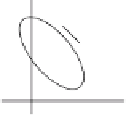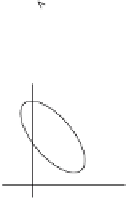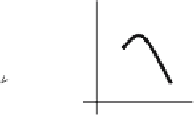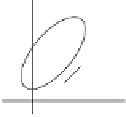Biomedical Engineering Reference
In-Depth Information
k
f
k
f
Φ =0
0
Φ =π
0
p
t
p
t
k
f
k
f
Φ =π/4
Φ =5π/4
0
0
p
t
p
t
k
f
k
f
Φ =π/2
Φ =3π/2
0
0
p
t
p
t
k
f
k
f
Φ =3π/4
Φ =7π/4
0
0
p
t
p
t
Fig. 5.6.
A rich diversity of syllables can be generated by simply changing the
delay between cyclic respiratory and syringeal gestures. The phase difference
φ
0
in
(5.8) and (5.9) is monotonically increased here in steps of
π/
4 from top to bottom,
and then left to right, to generate upsweeps, downsweeps or nonmonotonic syllables
5.3 The Active Control of the Airflow: a Prediction
When we described the anatomy of the oscine syrinx in Chap. 3, we high-
lighted the bipartite nature of the vocal organ. However, the discussion of
the labial oscillations in the previous subsections in this chapter refers to one
pair of labia only. This restriction is appropriate since, some birds use mostly
one side of their vocal organ. Some species use predominantly the left side
(such as the waterslager canary) and others the right side (such as the zebra
finch,
Taeniopygia guttata
, in order to produce calls), while some species use
both sides indiscriminately (such as the brown thrasher,
Toxostoma rufus
).
In some cases, both sides are used simultaneously during a vocalization. A
well-studied example of this class is the last syllable in the call of the black-
capped chickadee (
Parus atricapillus
), in which not only are the two sources
active but also they interact acoustically [Nowicki and Capranica 1986].
In order to achieve the lateralization implied in the use of one side of the
syrinx, the bird actively closes the side not used, pushing the labia against
each other. In some species, the muscles in charge of performing this task
are the siringealis dorsalis and the tracheobronchialis dorsalis. In the case of


































